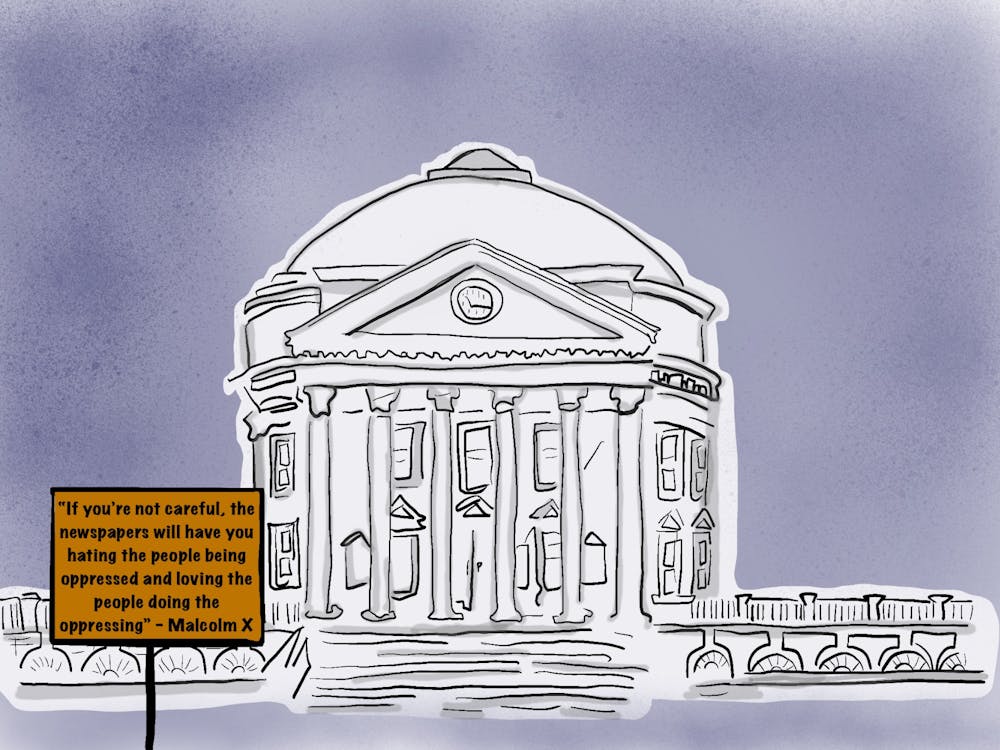Yesterday, Nicole Eramo, associate dean of students and chair of the Sexual Misconduct Board, released an open letter to Rolling Stone magazine condemning the magazine for its defamatory portrayal of her and her work in its article “A Rape on Campus,” touching upon how the magazine’s failure has affected sexual assault survivors here at the University.
Dean Eramo’s letter is not only accurate in its complaints about her own portrayal but also speaks to the severe damage Rolling Stone has done to survivors themselves and those who work to help survivors. Sabrina Rubin Erdely — the author of the article — did not just incorrectly portray one story; she mischaracterized the issue of sexual assault on college campuses altogether.
Following the release of the Columbia Journalism School’s report on the article, we described our frustrations with the lack of investigation into the magazine’s failures in portraying our school — that while the failure to fact-check the specific incident in question was immense, so was the author, editor and managing editor’s failure to correctly portray the environment they attempted to investigate. The damage this has done to our school and us, as students, is incalculable. But the damage the article’s portrayal of sexual assault has done to survivors deserves its own analysis.
Aside from failing in their presentation of Dean Eramo’s commendable work — which Dean Eramo says in her letter is “sustained by [her] passion for assisting young people through one of the most difficult experiences they will ever face” — the article’s author and overseers, after the article’s retraction, only took responsibility for their journalistic failures, and failed to acknowledge the damage their expose into campus sexual assault ultimately caused, however well-intentioned.
The rape portrayed in “A Rape on Campus” is one of the most extreme versions of rape. Most rapes on college campuses are not gang rapes; they are more similar to the experience Jenny Wilkinson, a University alumna, described in an op-ed for The New York Times.
The people who put together this article, at least based on their public statements, do not seem to wholly comprehend the damage they have caused to women whose assaults do not fit the mold they presented. The danger of their work is not just that survivors may not come forward for fear of being met with disbelief — a serious concern that Erdely mentioned in her recent apology. The bigger danger of their work is that survivors will not understand or believe their rapes were, in fact, rape, because what happened to them wasn’t violent enough by the standards Erdely set out. That is the environment that has been created at our school, and, quite possibly, beyond it.
At our school, this article had tangible, negative effects on students who have been sexually assaulted — one of which was that Dean Eramo, a strong advocate for survivors, had to be removed from working, in her words, “with the students with whom I had spent so much time building a relationship, forcing them to ‘start over’ with someone else.” Outside our school, this article has perpetuated a false image of rape: that it must look a certain way; that there is such a thing as a typical victim; that college campuses, in particular fraternities, are one of the few or perhaps the only space where this kind of oppression exists; and that the ways to help survivors are obvious.
We cannot overstate the harm these generalizations have created. People who are survivors may not see themselves as such, or if they do, they may not report their stories. And those who work tirelessly on behalf of survivors and take all the right steps — such as informing survivors of all their options and allowing them the room to make a choice to give them back their agency, something Erdely condemned in her article — must fear that doing the right thing will be manipulated and distorted by an ill-informed public.
We know that looking backward can provide us with ideas for how to move forward. Undoing the harm this one article caused is a bigger challenge than we know how to solve. But it starts with educating ourselves not just on why Erdely and her editors committed journalistic malpractice: it starts with understanding what rape is and how they got it wrong.




